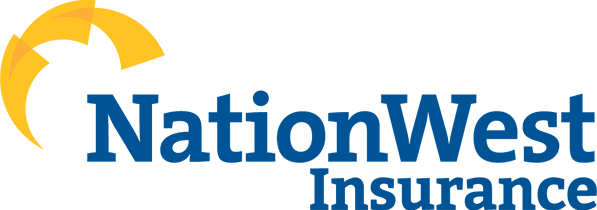
How To Reduce Cyberattack Risk For Your Business
November 29, 2022
With the number of cyberattacks on businesses dramatically increasing each and every year, current data suggests that the cost of damages from them will have grown by 300% between 2015 and 2025. The cost is projected to amount to a whopping $10.5 trillion US dollars annually. And those are only the financial statistics.
Cyberattacks on businesses impact revenue generation, interrupt operations, and breach client and employee confidentiality. They can be detrimental to a company’s hard-earned reputation and can also have psychological and emotional ramifications for those targeted.
Cyberattacks can happen to anyone at any time. Don’t assume that you’ll be exempt just because you own a small business or don’t maintain critical data in your system.
All in all, cyberattacks are a nightmare to be avoided at all costs. But what steps are you currently taking to protect your business? It’s imperative to think ahead and take preventative measures because if and when a cyberattack occurs, you won’t want to be scrambling.
Business insurance is one important factor that can help to drastically reduce the cost of damages caused by a cyberattack. But in addition to investing in business insurance, there are also many other steps you can take to help to increase your business’s cybersecurity.
Let’s take a look:
Top 10 Cyber Risk Reduction Practices
1. Regular Employee Training
Every successfully implemented business-wide initiative begins with effective employee training. There’s no use investing in pricey surveillance software if a hacker can simply lure one of your employees to divulge sensitive data through a phishing scam.
Phishing emails are communications that appear to be legitimate but actually contain malicious software. This software can be leveraged to gain access to personal employee information so that hackers can infiltrate your databases.
Conduct regular cyber awareness training sessions with your staff and emphasize the importance of checking email addresses before replying to them. Also, ensure that your employees are aware of your company’s policies around sharing information on social media platforms.
2. Frequent System Backups
This one is easy to do…but also easy to forget about. Cyberattacks often result in detrimental data loss, which can be easily avoided if you’ve got reliably maintained backups. Best practice is to backup data at regular intervals and to store at least three copies—two on-site, but on different types of media, and one off-site.
3. Strong Passwords
It’s tempting to assume that everyone in your company is creating strong passwords, but that’s not always the case. Passwords are the first line of defence against hackers and should be at least eight characters in length. Ideally, they should contain alphanumeric characters with no correctly spelled words and definitely no personal information—such as names or birth dates.
Business passwords should be changed and updated at frequent intervals, and personal passwords should not be used (or repeated) for access to your systems. A one-size-fits-all password model is just low-hanging fruit for hackers with malintent.
4. Create a Cybersecurity Policy
Your business probably has many policies in place. But do you have an iron-clad cybersecurity policy? Have you created guidelines for breach prevention and protection? And how often are they reviewed and updated?
Elements to consider in a strong cybersecurity policy include (but aren’t limited to): A disaster recovery plan (which ensures that your employees and IT team know the steps to take in case of a security breach), an access management policy (which specifies who may access sensitive information and under what circumstances), security testing (which includes regular system scans and vulnerability analyses), and an incident response plan (which highlights the responsibilities of key information security players to reduce response time in case of an emergency).
5. Increase Security Settings & Pay Attention to Updates
Most programs and systems come with built-in security controls and updates. Don’t ignore these!
Take the time to understand how to increase security settings to the highest levels (often as simple as switching a few toggles), and be sure to enable updates—even if it seems annoying. These features are designed to enhance your business’s safety and protection. Take advantage.
6. Install Firewalls & Protect Outbound Data
We all know about firewalls—protective defences and safeguards to keep unwanted intruders from infiltrating our private data. Firewalls are an important element of cybersecurity and definitely worth researching and investing in.
That being said, breaches don’t always come from the outside. Sometimes information exiting your system can be just as detrimental as threats from beyond its walls. Outbound data monitoring (a.k.a. egress filtering) can prevent rogue employees (or employees making honest mistakes) from releasing sensitive data from your network.
7. Data Encryption
Data encryption makes sensitive data unreadable without an encryption key. Even if the unthinkable happens and a hacker infiltrates your system, investing in encryption software can ensure that they won’t be able to decipher what they’ve stolen. You’ll still have to repair your system and deal with the damages, but at least your data will remain confidential and intact.
8. Physical Security
It’s easy to focus on digital security controls and forget about the physical world. But in reality, physical mistakes can still result in cyberattacks.
Employee negligence is a common cause of leaked information, and sometimes it’s as simple as an employee badge or credit card left out on a desk instead of placed in a locked drawer. Workers need to be instructed and reminded to treat files that contain personal information with the utmost professionalism, maintain a clean workstation, and be aware of where they discuss sensitive information, such as passwords and personal details about clients.
9. Conduct a Cybersecurity Risk Assessment
Be vigilant about who can access your systems and how. Third-party vendors must be vetted and monitored while on your premises, and systems access must be carefully tracked (even with your own employees).
Identifying your attack surfaces (the vulnerabilities or entry points by which a hacker could access sensitive data) is the first step in reducing them. Consider physical security systems, digital attack surfaces, and even social engineering attack surfaces. Sometimes to truly outsmart cyberattackers, you have to look at your assets through their eyes.
10. Invest in a Kill Switch
A kill switch is essentially a reactive cybersecurity protection strategy that shuts down all systems as soon as it detects any suspicious activity. Systems won’t resume function until the issue has been resolved.
Like any trigger system, kill switches can sometimes be over-sensitive. But in case of a real cyberattack, they can have immeasurably positive rewards.
Conclusion
To conclude, cyberattacks are on the rise, and it’s crucial to turn an eye to your business’s cybersecurity measures. The ten suggestions listed above are great starting points, but even before implementing any of them, be sure you’ve got a solid business insurance policy in place.
Business insurance is the safety net your business will rely on in the event that, despite your best efforts, a breach occurs in your cybersecurity. While we hope this never happens to you, we want you to have somewhere to turn, even under the worst of circumstances.
With decades of experience and genuine dedication to the needs of our customers, Nation West Winnipeg Insurance is prepared to help you find a suitable insurance policy for your business any day of the week. Reach out to one of our brokers today!

